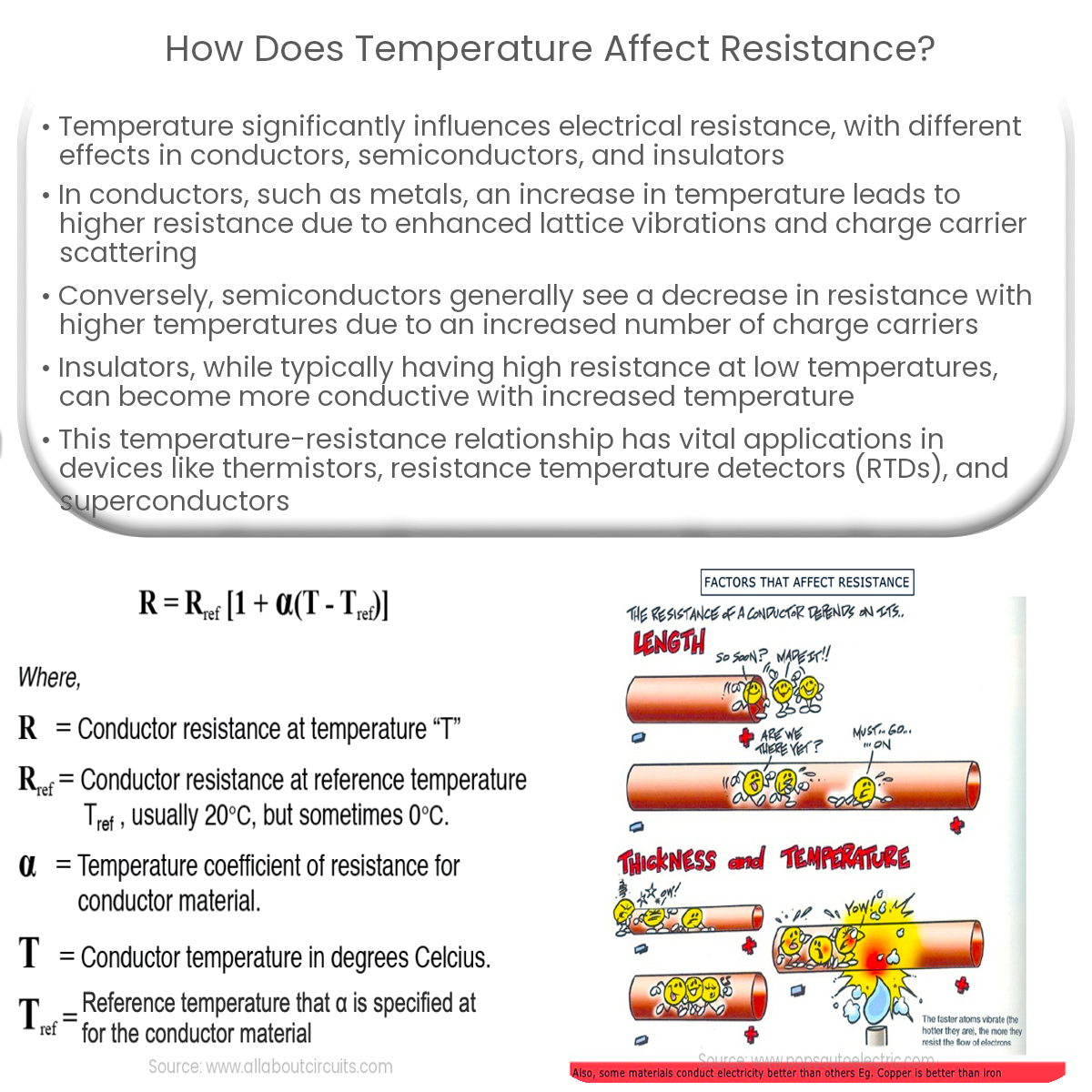Temperature affects resistance differently in conductors, semiconductors, and insulators, with resistance typically increasing in conductors and decreasing in semiconductors and insulators as temperature rises.
How Does Temperature Affect Resistance?
Temperature has a significant impact on the electrical resistance of materials. The relationship between temperature and resistance varies depending on the type of material, with different behaviors observed in conductors, semiconductors, and insulators.
Conductors
In conductive materials, such as metals, temperature and resistance are generally directly proportional. As temperature increases, the resistance of a conductor also increases. This is primarily due to the following factors:
- Lattice Vibrations: As the temperature of a conductor increases, the vibrations of the atomic lattice become more pronounced, causing increased scattering of charge carriers, which leads to a higher resistance.
- Charge Carrier Scattering: The increased thermal energy at higher temperatures results in more frequent collisions between charge carriers, further increasing resistance.
The temperature coefficient of resistance (TCR) quantifies the change in resistance per unit change in temperature, and is typically positive for conductive materials.
Semiconductors
Semiconductors exhibit a more complex relationship between temperature and resistance. Unlike conductors, their resistance generally decreases with increasing temperature. This behavior can be attributed to two main factors:
- Increased Charge Carrier Concentration: As temperature rises, more charge carriers are generated due to the increased thermal energy. This leads to a higher conductivity and lower resistance.
- Charge Carrier Mobility: Although higher temperatures can also result in increased charge carrier scattering, the overall impact on resistance in semiconductors is dominated by the increased concentration of charge carriers.
The TCR of semiconductors is typically negative, reflecting the inverse relationship between temperature and resistance.
Insulators
Insulators have very high resistance values at low temperatures, making them poor conductors of electricity. However, as the temperature of an insulator increases, its resistance generally decreases. This behavior can be attributed to the increased thermal energy, which can promote some charge carriers to the conduction band, making the material more conductive.
Temperature-Dependent Applications
The temperature dependence of resistance has practical applications in various devices and technologies:
- Thermistors: Thermistors are temperature-sensitive resistors that exhibit either a positive or negative TCR, and are widely used for temperature sensing and control.
- RTDs: Resistance temperature detectors (RTDs) are sensors that employ materials with a well-defined positive TCR to measure temperature accurately.
- Superconductors: Certain materials exhibit superconductivity, a state of zero electrical resistance, when cooled below a critical temperature. This property has potential applications in power transmission, magnetic resonance imaging, and quantum computing.
In conclusion, understanding the effects of temperature on resistance is crucial for designing and optimizing electrical systems and devices that operate under various temperature conditions.


